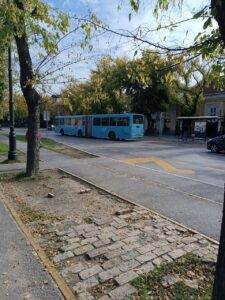Are wooden houses the future of construction in Subotica?
As the world grapples with the pressing challenges of climate change and urbanization, the construction industry is undergoing a significant transformation. In Subotica, a city known for its rich architectural heritage and cultural diversity, the question arises: Are wooden houses the future of construction? With their sustainable attributes, aesthetic appeal, and potential for energy efficiency, wooden houses present a compelling alternative to traditional building materials. This article delves into the viability of wooden houses in Subotica, exploring their benefits, challenges, and the broader implications for the region’s architectural landscape.
The Benefits of Wooden Houses
Wooden houses offer a myriad of advantages that align with contemporary environmental goals. Firstly, timber is a renewable resource, and when sourced sustainably, it has a significantly lower carbon footprint compared to conventional materials like concrete and steel. In a city like Subotica, where the preservation of natural resources is paramount, the use of wood can contribute to a more sustainable construction paradigm. Additionally, wooden structures have excellent thermal insulation properties, which can lead to reduced energy consumption for heating and cooling, ultimately lowering utility bills for homeowners.
Moreover, wooden houses are often quicker to construct than their brick or concrete counterparts. This efficiency can be particularly beneficial in Subotica, where the demand for housing is on the rise. The speed of construction not only reduces labor costs but also minimizes the disruption to the surrounding community. Furthermore, the aesthetic versatility of wood allows for a wide range of architectural styles, enabling homeowners to create personalized spaces that reflect their tastes while harmonizing with Subotica’s unique cultural landscape.
Lastly, wooden houses contribute to improved indoor air quality. Unlike traditional building materials that may emit harmful volatile organic compounds (VOCs), wood is a natural material that can help regulate humidity and create a healthier living environment. This aspect is especially important in urban settings where air quality can be compromised. As residents of Subotica increasingly prioritize health and well-being, the appeal of wooden houses as a healthier alternative becomes even more pronounced.
Challenges to Wooden House Construction
Despite their numerous benefits, the adoption of wooden houses in Subotica is not without challenges. One significant concern is the perception of wood as a less durable material compared to concrete or brick. Many potential homeowners may harbor reservations about the longevity and resilience of wooden structures, particularly in the face of harsh weather conditions. To address this, it is essential for builders and architects to educate the public about modern wood treatment techniques and design innovations that enhance durability and resistance to pests and decay.
Another challenge lies in the regulatory framework governing construction in Subotica. Building codes and zoning laws may not yet fully accommodate wooden structures, which could hinder their widespread adoption. Local authorities must consider revising these regulations to facilitate the integration of wooden houses into the urban fabric. This may involve conducting studies to assess the safety and viability of wooden construction methods, as well as engaging with stakeholders to foster a collaborative approach to policy development.
Lastly, the availability of skilled labor for wooden construction poses a challenge. While traditional masonry skills are well-established in Subotica, the expertise required for timber framing and modern wood construction techniques may be lacking. To overcome this hurdle, investment in training programs and workshops is crucial. By equipping the local workforce with the necessary skills, Subotica can position itself as a leader in sustainable construction practices, paving the way for a future where wooden houses are a common sight in the city.
The Future of Wooden Houses in Subotica
Looking ahead, the future of wooden houses in Subotica appears promising, provided that the challenges are addressed effectively. As global awareness of sustainability continues to grow, the demand for eco-friendly housing solutions is likely to increase. Subotica, with its rich natural resources and commitment to preserving its environment, is well-positioned to embrace this trend. By promoting wooden construction, the city can not only reduce its carbon footprint but also enhance its appeal as a progressive and environmentally conscious community.
Furthermore, the integration of wooden houses into Subotica’s architectural landscape can foster a sense of community and connection to nature. The warm, organic aesthetic of wood can create inviting spaces that encourage social interaction and a sense of belonging among residents. As urban areas become increasingly dense, the need for such communal spaces becomes more critical. Wooden houses can serve as a bridge between modern living and the natural environment, offering a harmonious balance that resonates with the values of contemporary society.
In conclusion, the potential for wooden houses to shape the future of construction in Subotica is significant. By embracing this sustainable building material, the city can lead the way in innovative and environmentally friendly construction practices. With the right investments in education, regulation, and community engagement, Subotica can transform its architectural landscape, making wooden houses not just a possibility, but a reality for generations to come.
In summary, the question of whether wooden houses are the future of construction in Subotica is met with a resounding „yes,“ provided that the challenges are met with proactive solutions. As the city navigates the complexities of modern construction, the integration of wooden houses can serve as a testament to Subotica’s commitment to sustainability, community, and innovation. By fostering a culture that embraces eco-friendly practices, Subotica can not only enhance its architectural identity but also contribute to a more sustainable future for all its residents.


